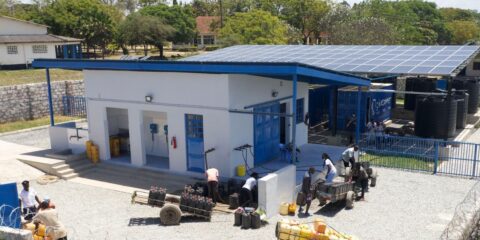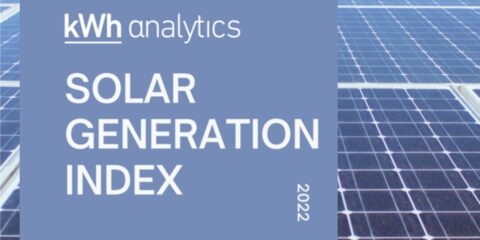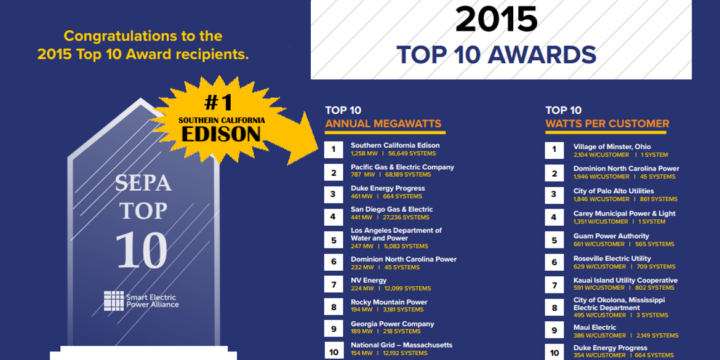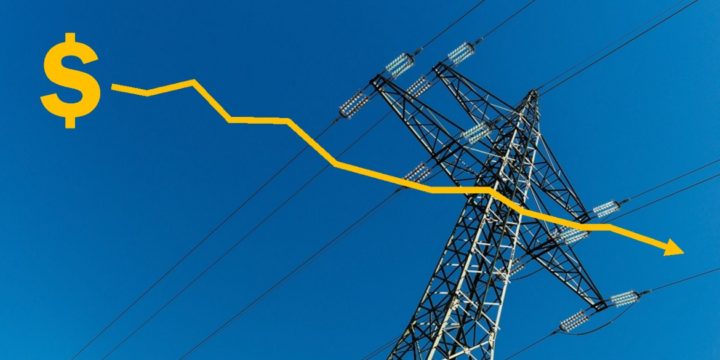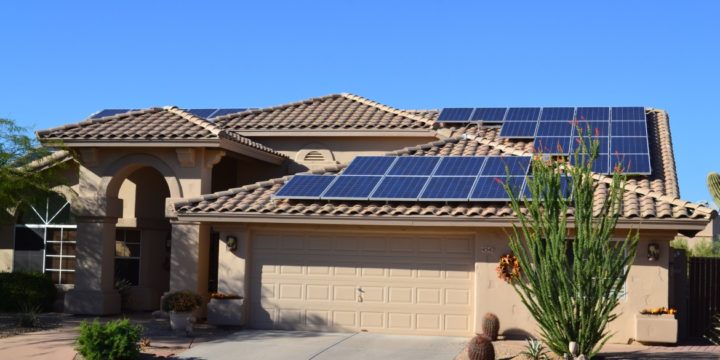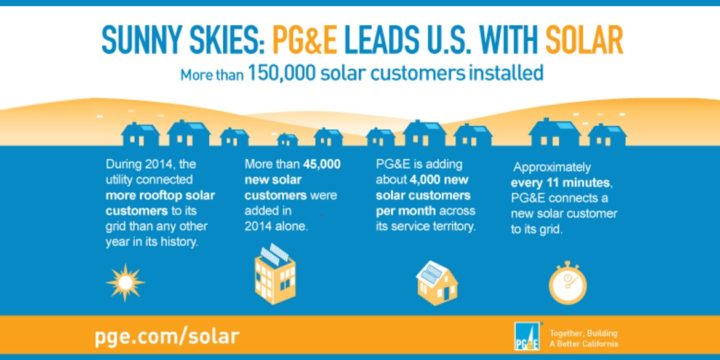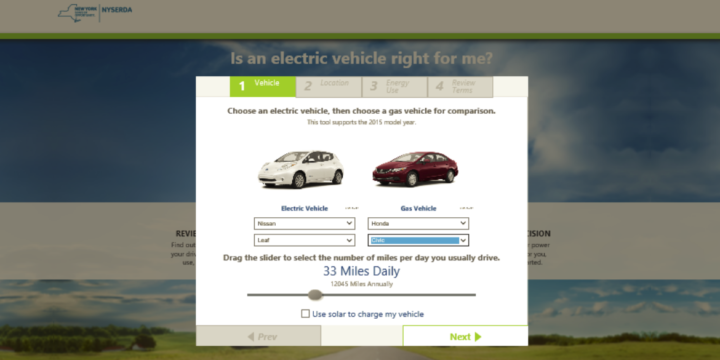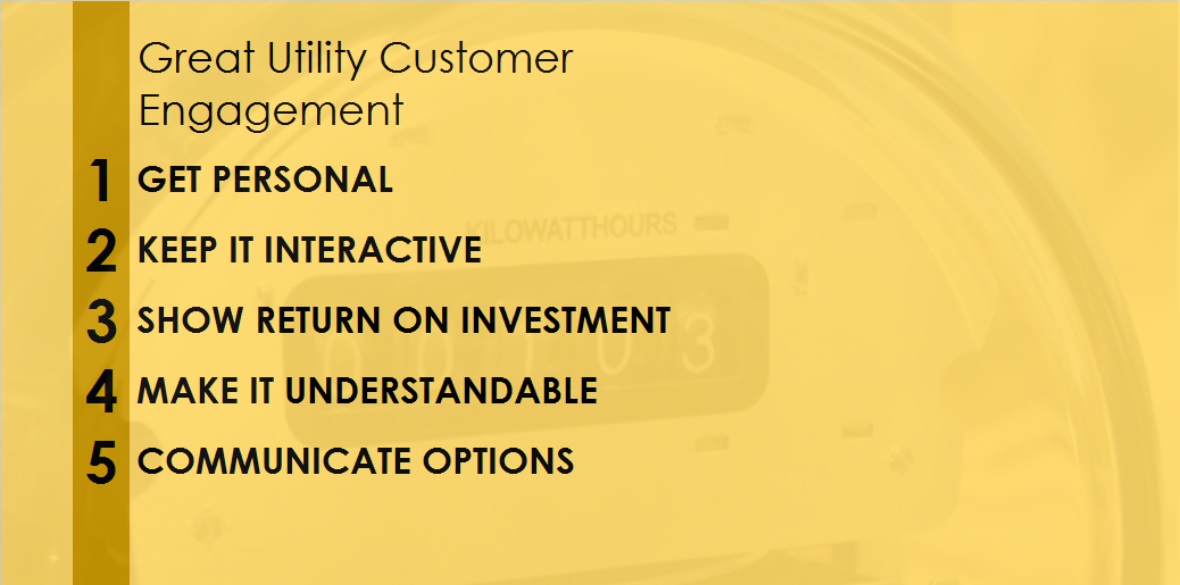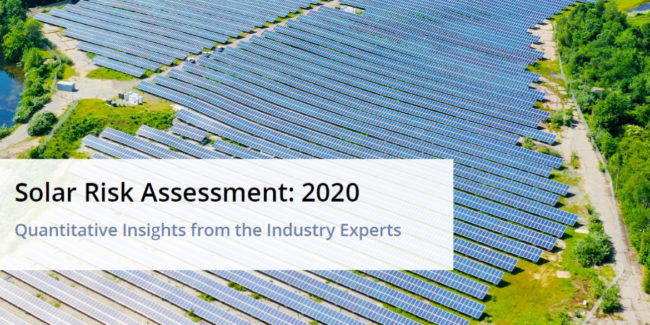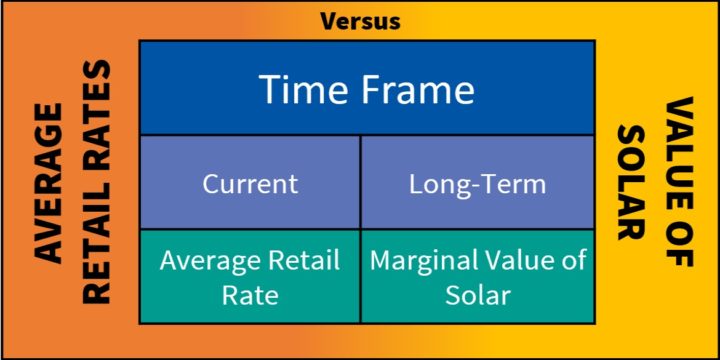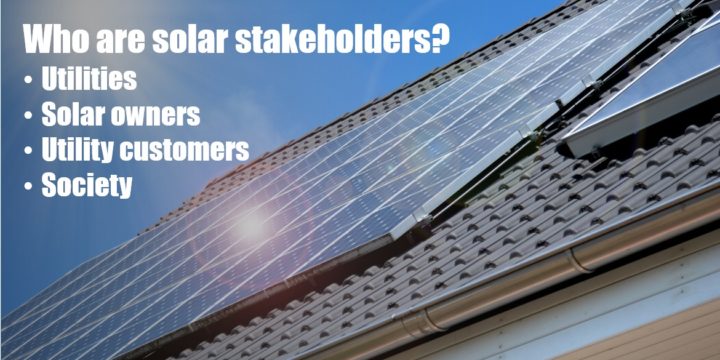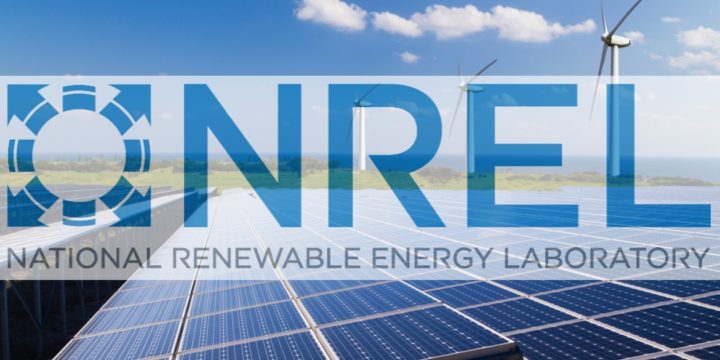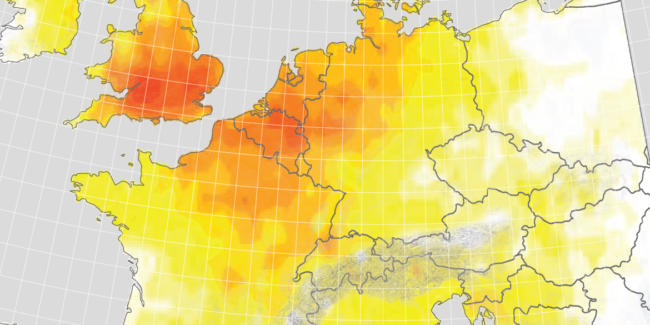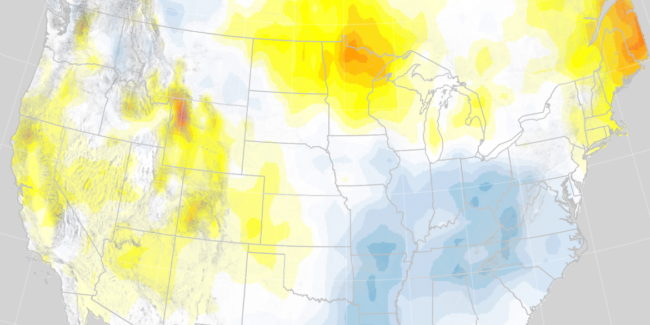No Results Found
The page you requested could not be found. Try refining your search, or use the navigation above to locate the post.
No Results Found
The page you requested could not be found. Try refining your search, or use the navigation above to locate the post.
Enabling the future of solar: Bifacial PV modeling takes center stage in SolarAnywhere API, powered by industry-trusted pvlib models
According to the World Energy Outlook report by the International Energy Agency (IEA), global annual solar PV capacity growth is expected to more than quadruple in 2030 to 650 GW. Nearly 50% of the global solar capacity is slated to come from utility-scale...
Reducing administrative overload: How to streamline utility energy programs
Tame Backlogs and Avoid Administrator Burnout with Empowered Program Teams. The transition to clean energy is a top priority for utility companies, but the administrative burden of energy programs can be overwhelming for staff. Inefficient and time-consuming...
Case Study: Learn how GivePower® uses SolarAnywhere® to optimize Solar Water Farms for underserved communities
We’re always excited to hear about the projects our SolarAnywhere® clients are working on, but GivePower® is truly inspiring. GivePower® designs and installs life-changing Solar Water Farms that can produce up to 75,000 liters of safe water per day—for up to 20...
Partnering with Integral Analytics to help utilities optimize distribution network investments
We’re pleased to be working with Integral Analytics to help electric utilities have greater visibility into the impact of DERs on their load forecasts. The new solution addresses key DER information gaps and equips utility planners with the information needed to gain...
Solar Generation Index 2022: Continued P50 underperformance of 7-13% highlights need for accurate data and greater transparency
Despite continued supply chain disruptions in 2022, the U.S. solar industry’s outlook appears strong with the passage of the Inflation Reduction Act (IRA). SEIA and Wood Mackenzie have increased their U.S. solar deployment forecast, expecting the industry...
Case Study: Rappahannock Electric Cooperative streamlines solar program
Rappahannock Electric Cooperative's (REC) Energy Solutions and Clean Energy team struggled with high solar support call volumes and a labor-intensive interconnection process. To improve their residential and commercial solar programs, REC sought to automate customer...
Unpacking the Inflation Reduction Act part 2: Strategies for electric utilities to effectively scale DER adoption
This is part 2 of a 2-part blog. In Part 1, we discussed the challenges and impact of the Inflation Reduction Act on utilities and energy agencies. In Part 2, we’ll share utility best practices to meet increased DER program demands and demonstrate how Clean Power...
How utilities can forecast DER impact by leveraging customer insights, operational data and data analytics
Utilities must meet consumer demand with reliable supply amongst changing consumer habits. The DER tidal wave is on its way, powered by the Inflation Reduction Act (IRA), aggressive state, federal and utility emission reduction goals, and growing customer interest in...
Unpacking the Inflation Reduction Act part 1: Key elements impacting utilities and energy agencies
This is part 1 of a 2-part blog. Here we’ll discuss the impact of the IRA on utilities and energy agencies, and some common challenges. In Part 2, we’ll share utility best practices to meet increased DER program demands and demonstrate how Clean Power Research is...
Southern California Edison’s journey to same-day interconnection
Winning Smart Electric Power Alliance’s top award for connecting the most solar in 2015—1,258 new MW of capacity—didn’t come without challenges for Southern California Edison. Adding that much capacity meant that the utility connected a new solar customer to the grid...
Powering maps with the distributed generation system-of-record
Mapping is an indispensable tool for electric utilities to understand their distribution networks and related capacities to maintain power quality and reliability. The addition of new distributed generation, including rooftop solar photovoltaic (PV) systems, can...
Build trust with your customers by facing electric rate changes head-on
By now it’s old news that the utility business model needs to change. According to Utility Dive’s 2016 State of the Electric Utility Survey, only 3% of utility respondents feel the utility business model does not need to evolve. Unsurprisingly, utilities are investing...
2016: The year of enhanced energy price competition
You can’t go anywhere these days without hearing about the price of oil. While in past years that often meant oil prices were skyrocketing, today, oil is threatening to hit 20-year lows (in inflation adjusted dollars). Right now, oil demand is so low, and supply is so...
Intelligently manage distributed solar fleets with an online system-of-record
Administrating an interconnection or incentive program can be challenging, especially when it comes to keeping track of all the data. With multiple systems-of-record, program administrators can be forced to search through emails, paper documents, document management...
U.S Department of Energy SunShot Initiative Award Helping Commercial Buildings Get the Most from their Solar Investments
The U.S. Department of Energy SunShot Initiative has awarded funding to EdgePower and Clean Power Research to develop technology that will help commercial buildings maximize the financial return of their solar PV investments. By integrating solar forecast technology...
Tucson Electric Power innovation makes utility-owned solar accessible for all
As solar has gained popularity, some utilities are getting into the business by offering residential customers utility-owned solar. This is often a good option for homeowners who want to save money on their utility bills with minimal out-of-pocket costs and freedom...
Hot topics at Intersolar NA 2015: ITC, solar + storage and snow!
San Francisco once again played host to the Intersolar North America conference in July. For industry veterans, this year’s event was familiar: crowded registration lines, bumping into old friends and a busy exhibition floor. On the other hand, this year’s hot...
Connecting 150,000 solar customers to PG&E’s electric grid
This week, Pacific Gas & Electric (PG&E) announced a major milestone: connection of 150,000 solar customers to their electric grid. This achievement is the result of PG&E’s long commitment to supporting their customers going solar, and comes with some...
Solar+ homes (Part 2): What is a Solar+ home?
This is the second article of an 11-part series on Solar+ homes. The series describes how homeowners can combine simple energy efficiency measures, solar PV, electric vehicles and appliance electrification to create households that are fully powered by solar...
Solar+ homes (Part 1): The new foundation of the energy transformation
This is the first article of an 11-part series on Solar+ homes. The series describes how homeowners can combine simple energy efficiency measures, solar PV, electric vehicles and appliance electrification to create households that are fully powered by solar...
Build trust with your customers by facing electric rate changes head-on
By now it’s old news that the utility business model needs to change. According to Utility Dive’s 2016 State of the Electric Utility Survey, only 3% of utility respondents feel the utility business model does not need to evolve. Unsurprisingly, utilities are investing...
Are utilities the key to kick-starting electric vehicle sales in 2016?
After three years of strong growth, plug-in electric vehicle (PEV or ‘EV’) growth fell in 2015. Lower gas prices and consumers waiting for the new 2016 Nissan Leaf (and its longer range) were part of the reason for the decrease in sales, but likely these factors don’t...
2016: The year of enhanced energy price competition
You can’t go anywhere these days without hearing about the price of oil. While in past years that often meant oil prices were skyrocketing, today, oil is threatening to hit 20-year lows (in inflation adjusted dollars). Right now, oil demand is so low, and supply is so...
With electric vehicles and solar, the ‘whole is greater than the sum of its parts’
Is it possible to save more money by combining an electric vehicle (EV) with a home solar PV system rather than considering each individually? Often the answer is yes, and the additional savings can be substantial. To help energy consumers answer that question,...
Infographic: 5 Characteristics of Great Utility Customer Engagement
Industry research indicates that utilities that successfully educate their customers about their energy options will be positioned to survive and thrive, even as the industry evolves. Here’s how utilities can get the most from their customer engagement. Want to learn...
Tapping the win-win-win of rate reform
Utilities nationwide are adding variety to residential electric rate plans and reconsidering how to value rooftop solar. Rate changes being considered include demand charges and net metering “2.0” policies that provide customers less than full retail credit. These...
Hot topics at Intersolar NA 2015: ITC, solar + storage and snow!
San Francisco once again played host to the Intersolar North America conference in July. For industry veterans, this year’s event was familiar: crowded registration lines, bumping into old friends and a busy exhibition floor. On the other hand, this year’s hot...
Solar resource trends: Changing cloud-cover and AOD, and implications for PV yield
In recent years, we reported on lower-than-expected solar energy production in the Eastern U.S., corroborating PV plant owner observations using SolarAnywhere® insolation data. This prompted us to ask the questions: How does this recent weather activity compare to...
New Solar Risk Assessment report provides data-based insights for the solar industry
The latest kWh Analytics “Solar Risk Assessment” report provides solar investors with the latest insights on the evolution of solar photovoltaic (PV) generation risk—and the importance of allowing data-based insights to inform the deployment of capital. This report...
Less coal, sunnier skies increasing solar project value
In many regions around the world, the skies are getting cleaner thanks to controls on air pollution designed to benefit public health. The Eastern U.S. and Europe have seen dramatic improvements in air quality since the 1980s. Coal plant retirements and stricter...
Clean Power Research and EPRI win NYSERDA clean-energy challenge
We’re pleased to announce that Clean Power Research and Electric Power Research Institute (EPRI) have been selected as winners of the New York State Energy Research and Development Authority’s (NYSERDA’s) “Future Grid Challenge.” The project will demonstrate...
Leveraging GOES-17 for more accurate solar data
In February 2018, we blogged about the future of solar forecasting with the new NOAA/NASA GOES-16 satellite. The launch of the GOES-17 satellite held similar promise, but bringing it online ended up being problematic for NOAA/NASA—and provided a few wrinkles for those...
SolarAnywhere® 2019 weather report: Midwest solar energy resource downturn continues for second year
In July 2019 we posted an article about unprecedented weather affecting the solar energy resource across much of the U.S. during 2018 and the first half of 2019. In that article, we anticipated a rebound during the second half of 2019. So now that 2019 is over, where...
A long history of data is key to solar project bankability
While the average power purchase agreement (PPA) price falls to keep solar competitive, the amount of global solar capacity developed in the past two-years has increased at a rate of roughly 30% year-over-year. This means that project developers are being forced to...
SolarAnywhere now-casts to support EDD-led U.S. DOE project to improve grid resiliency with interconnected DERs
Clean Power Research was selected to participate in a U.S. Department of Energy (DOE) research and development (R&D) project focused on increasing behind-the-meter solar situational awareness and grid resiliency. SolarAnywhere® historical, now-cast and forecast...
Demand for firm power driving innovation in solar forecasting
Since 2014, compelling economics have made renewable energy the preferred source of new power generation capacity in the United States. Energy cost parity with traditional sources has been well-established by the International Renewable Energy Agency (IRENA) and other...
No Results Found
The page you requested could not be found. Try refining your search, or use the navigation above to locate the post.
Tapping the win-win-win of rate reform
Utilities nationwide are adding variety to residential electric rate plans and reconsidering how to value rooftop solar. Rate changes being considered include demand charges and net metering “2.0” policies that provide customers less than full retail credit. These...
Valuation of solar plus storage in Hawaii
Clean Power Research recently took on the challenge of developing a new methodology for performing a hybrid solar plus storage (solar + storage) valuation study for systems in Hawaii. The methodology was commissioned by the Interstate Renewable Energy Council, Inc....
Is it rational for the value of solar to exceed existing average retail electricity rates?
The utility and solar industries are in a heated debate about how to compensate customers who have distributed photovoltaic (PV) energy systems on their homes. Net energy metering (NEM) is currently the predominant approach used in the U.S. However, to understand any...
Minnesota first to develop Value of Solar tariff methodology for use statewide
The Minnesota Department of Commerce Division of Energy Resources (Commerce) has kicked off a stakeholder engagement process that will lead to the development of the methodology of an optional Value of Solar™ tariff for the Minnesota Investor Owned Utilities (IOUs)....
LADWP doubles solar generation capacity with streamlined incentive processing
The Los Angeles Department of Water & Power (LADWP) – the nation’s largest municipal utility – processed 400% more solar incentives in the 2011-2012 fiscal year after implementing a new, more efficient program management solution from Black & Veatch and Clean...
NREL turns to SolarAnywhere for NSRDB
Yesterday, the National Renewable Energy Laboratory (NREL) announced the newest release of the National Solar Radiation Database (NSRDB). The database is widely used by solar system designers, building architects and engineers, renewable energy analysts and others to...
Accolades for Austin Energy’s Value of Solar tariff continue
Austin Energy’s innovative approach to compensating distributed solar owners is continuing to receive accolades across the country. In September, Austin Energy received an Innovation Award from the Interstate Renewable Energy Council (IREC). Earlier in the year Austin...
Austin Energy’s Value of Solar Tariff, a new approach for valuing Distributed Generation (DG)
Austin has long had a reputation as a hip college town with an innovative music scene, but did you now it's a pioneer in the design of electric tariffs for distributed generation (DG)? Yes, it's true. Austin Energy has composed a new tune...and it sounds like an...
Record climate disasters, moderate solar deviations through Q3 2020
We’re introducing a major upgrade to our SolarAnywhere® solar deviation maps! The new maps expand coverage to three continents and increase resolution to ~50 km. The maps give asset managers and owners high-level insights into the weather trends affecting the...
What’s the value of your solar data? (And why the median approach to solar resource data selection falls short)
Are the solar industry’s pre-construction production estimates too optimistic? Yes, according to several contributions to the “Solar Risk Assessment: 2020” paper published by kWh Analytics. kWh found evidence of “an industry wide bias towards aggressive predictions,”...
Solar resource trends: Changing cloud-cover and AOD, and implications for PV yield
In recent years, we reported on lower-than-expected solar energy production in the Eastern U.S., corroborating PV plant owner observations using SolarAnywhere® insolation data. This prompted us to ask the questions: How does this recent weather activity compare to...
New Solar Risk Assessment report provides data-based insights for the solar industry
The latest kWh Analytics “Solar Risk Assessment” report provides solar investors with the latest insights on the evolution of solar photovoltaic (PV) generation risk—and the importance of allowing data-based insights to inform the deployment of capital. This report...
Working from home? PowerClerk delivers for utilities and their customers
This post explains how to extract maximum value from PowerClerk® in “work from home” situations and outlines a new offer for utilities and energy agencies to use PowerClerk at no cost on COVID-19-related programs. Working from home with no compromises With the broad...
Less coal, sunnier skies increasing solar project value
In many regions around the world, the skies are getting cleaner thanks to controls on air pollution designed to benefit public health. The Eastern U.S. and Europe have seen dramatic improvements in air quality since the 1980s. Coal plant retirements and stricter...
Clean Power Research and EPRI win NYSERDA clean-energy challenge
We’re pleased to announce that Clean Power Research and Electric Power Research Institute (EPRI) have been selected as winners of the New York State Energy Research and Development Authority’s (NYSERDA’s) “Future Grid Challenge.” The project will demonstrate...
Leveraging GOES-17 for more accurate solar data
In February 2018, we blogged about the future of solar forecasting with the new NOAA/NASA GOES-16 satellite. The launch of the GOES-17 satellite held similar promise, but bringing it online ended up being problematic for NOAA/NASA—and provided a few wrinkles for those...
SolarAnywhere® 2019 weather report: Midwest solar energy resource downturn continues for second year
In July 2019 we posted an article about unprecedented weather affecting the solar energy resource across much of the U.S. during 2018 and the first half of 2019. In that article, we anticipated a rebound during the second half of 2019. So now that 2019 is over, where...


